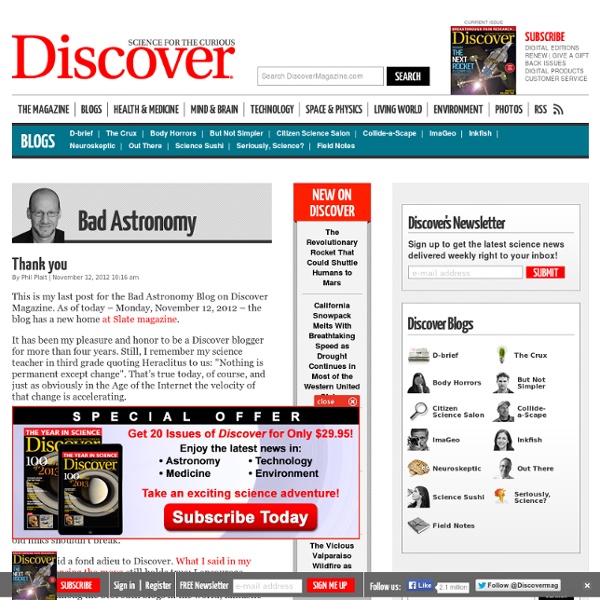Pharyngula
Probably not. But the New York Times reports: A review of studies has found that the health benefits of infant male circumcision vastly outweigh the risks involved in the procedure.
55 Cancri e
55 Cancri e (abbreviated 55 Cnc e) is an extrasolar planet orbiting the Sun-like star 55 Cancri A. Its mass is about 7.8 Earth masses and its diameter is about twice that of Earth's,[4] thus classifying it as the first Super-Earth discovered around a main sequence star, predating Gliese 876 d by a year. It takes less than 18 hours to complete an orbit and is the innermost known planet in its planetary system. 55 Cancri e was discovered on August 30, 2004.
The Loom
Your hands are, roughly speaking, 360 million years old. Before then, they were fins, which your fishy ancestors used to swim through oceans and rivers. Once those fins sprouted digits, they could propel your salamander-like ancestors across dry land.
How To Sell Magic Beans
One of the eternal questions for skeptics is – how can some people be so gullible? We have a standard answer which captures many of the factors: poor understanding of science, lack of an innate sense of probability, all the various mechanisms of self-deception, and the strong desire to believe in certain things. Further, some cons are just slick, and anyone can be fooled by a clever-enough deception. But still, there are some claims that are so astoundingly gullible it’s difficult not to face-palm when confronted by them. One category of such claims is what I think of as the equivalent of magic amulets, or the magic beans from Jack and the Beanstalk.
Starry Messenger: Ptolemy Biography
In the Syntaxis (or Almagest), Ptolemy (second century A.D.) synthesised mathematical astronomy into a coherent whole which rendered his predecessors obsolete and would dominate Western and Islamic thought until the sixteenth century. He also wrote works on astrology, geography, optics and music. Nothing reliable is known of Claudius Ptolemy's life that cannot be deduced from his surviving works; only a few brief and unsupported biographical statements are made by much later sources.
NeuroLogica Blog
Jan 13 2017 Cognitive Biases in Health Care Decision Making This was an unexpected pleasant find in an unusual place. The Gerontological Society of America recently put out a free publication designed to educate patients about cognitive biases and heuristics and how they can adversely affect decision making about health care.
Total Lunar Eclipse Coincides with Winter Solstice
Credit: Jim Fakatselis, NASA Can you view it? Cloud cover forecast Click to enlarge Everyone knows that "the moon on the breast of new-fallen snow gives the luster of mid-day to objects below."
paleoanthropology, genetics and evolution
I have a review of Marlene Zuk's new book, Paleofantasy , in this week's Nature : "Evolutionary biology: Twisting the tale of human evolution" [1] . I can't replicate my review here, but for people who have access to Nature I thought I'd bring attention to it. And if you don't have access, I wanted to share a couple of my reactions.
History of Constellation and Star Names
The illustrations on this page have been compiled from a variety of sources. If advised that copyright has been infringed I will immediately remove the particular illustration(s). Return To Section Index Page G: Greek Constellations 13: Classical Greek constellations



